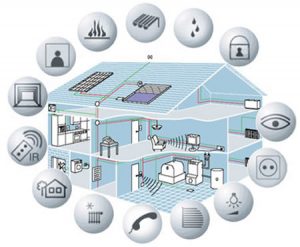There are various technologies to apply into an existing home. Each technology has its own unique features and benefits this makes others more suitable than others. Some of the popular home automation technologies include:
This is the mostly used and preferred technology since it offers a good network reliability and stability. The best feature for this type of technology is their cross compatibility among different branded systems. Each Z-wave device has a unique identification thus making the system secure. Also Z-wave is a mesh protocol and thus all devices can communicate to each other’s-wave operating frequency varies in different regions and also one can extend the range of devices by using them as repeaters.
 This is the standard used in home automation technology and resembles Bluetooth and wi-fi .The Zigbee devices are preferred due to their low power consumption and other specifications which make s the device ideal for battery operated users. Like Z-wave it is a mesh protocol, where the devices communicate to each other. Due to many advantages it has not gained a large share in the market due to its incompatibility among different vendors.
This is the standard used in home automation technology and resembles Bluetooth and wi-fi .The Zigbee devices are preferred due to their low power consumption and other specifications which make s the device ideal for battery operated users. Like Z-wave it is a mesh protocol, where the devices communicate to each other. Due to many advantages it has not gained a large share in the market due to its incompatibility among different vendors.
X-10
This is one of the oldest available home automation standards. The technology is still in the market despite tough competition from newer standards. Its advantage is that it can use either wired power line or wireless radio communication methods and they are inexpensive .Its biggest drawback is that its transmission of messages occur one command at a time. Concurrent signals may lead to decoding issues leading to loss of commands.
This was designed to integrate power line systems with wireless systems, and was build to replace X-10 standard. It was designed such that it enables devices, whether sensors or switches to be used together using power line or radio frequency. Other than X-10 it is the only technology that communicates via both wireless and power line technologies. It’s also advantageous in such that it is partially compatible with X-10 devices.
This is one of the newest technologies used in home automation. It was aimed to use the least amount of energy through energy harvesting this makes the maintenance minimal. their unique feature is that they can work battery less and still have the ability to communicate wirelessly. This is achieved by means of micro energy converters along with ultra-low power electronics. Early designs used piezo electric generators but were later replaced by electromagnetic energy sources. Their popularity in homes is less than X-10 but they are still growing.

